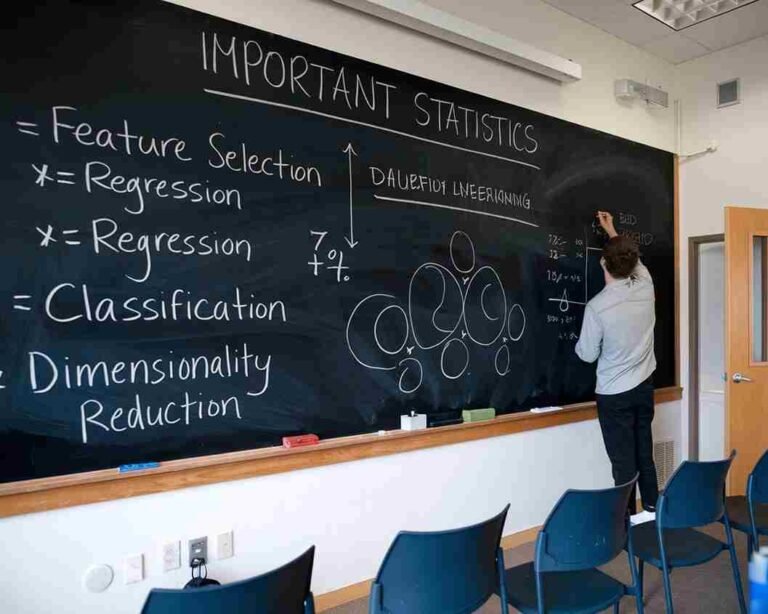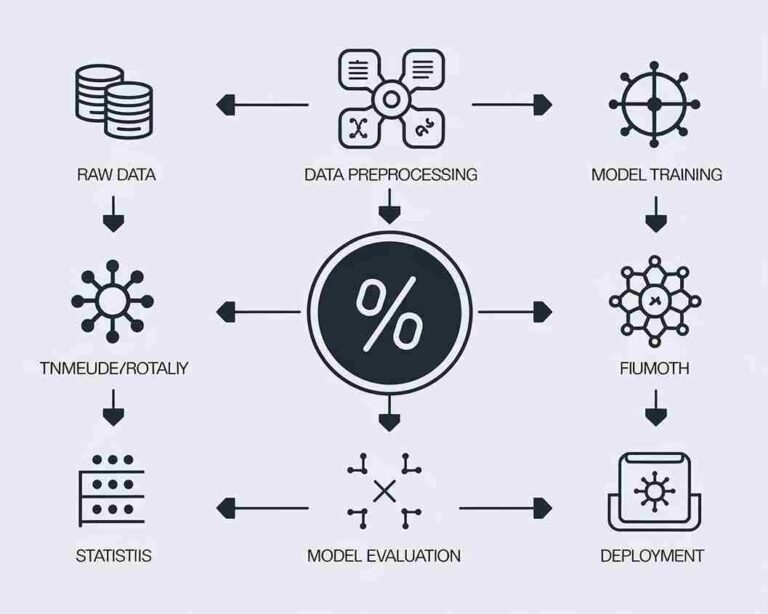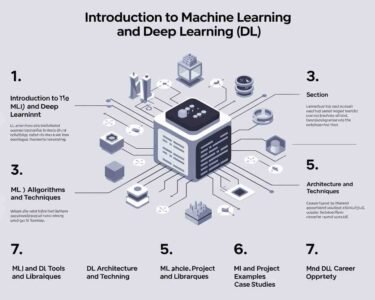Statistics and Machine Learning

What Are Statistics and Machine Learning?
Statistics:
The primary function of statistics is to collect, analyze, and interpret data. It helps identify specific patterns or trends in the data, aiding in informed decision-making.
Machine Learning (ML):
Machine learning is a data-driven technology where a system learns from data through model training to make future predictions.
Relationship Between Statistics and Machine Learning
ML Is Based on Statistics:
Machine learning algorithms are built on statistical concepts and methods.
- Examples: Linear Regression, Logistic Regression, etc., originate from statistics.
Data Pattern Analysis:
Statistics help in analyzing patterns and data distribution, which is an initial step in building machine learning models.
Model Performance Evaluation:
Statistical metrics (e.g., Accuracy, Precision, Recall, p-value) are used to evaluate the performance of machine learning models.
Probability and Uncertainty Handling:
Probability, a key branch of statistics, is essential for ML models to predict future outcomes.
Hypothesis Testing:
Statistical hypothesis testing ensures the reliability of model results and data insights.
Important Statistics Topics Used in Machine Learning

Probability & Distributions:
- Normal Distribution, Binomial Distribution
- Conditional Probability, Bayes’ Theorem
Descriptive Statistics:
- Mean, Median, Mode
- Standard Deviation, Variance
Inferential Statistics:
- Hypothesis Testing (t-test, z-test)
- Confidence Intervals
Regression Analysis:
- Linear Regression, Logistic Regression
- Residual Analysis
Feature Selection & Dimensionality Reduction:
- PCA (Principal Component Analysis)
- Correlation Analysis
Evaluation Metrics (Per Statistics):
- Precision, Recall, F1 Score
- ROC-AUC, p-value
Importance of Statistics in Machine Learning

Data Analysis and Pre-Processing:
Statistics are crucial for understanding data before model building. They help identify missing values and outliers.
Model Performance Enhancement:
Statistics assist in fine-tuning model parameters and selecting the best features.
Data-Driven Decision Making:
When combined, statistics and machine learning help businesses make informed decisions.
Accurate Predictions:
Statistical tools and methods enhance the accuracy of ML model predictions.
How to Learn? (Step-by-Step Guide)
Step 1: Start Learning Statistics
- Basic Descriptive and Inferential Statistics
- Probability and Distributions
Step 2: Learn Machine Learning with Python
- Libraries: Pandas, NumPy, Scikit-learn
- Basic ML Models: Linear Regression, Logistic Regression
Step 3: Learn Advanced Statistics
- Hypothesis Testing, ANOVA, PCA
Step 4: Work on Machine Learning Projects
- Participate in Kaggle Competitions
- Create small projects
Step 5: Tackle Real-World Projects
- Evaluate model performance.
- Create insightful reports for stakeholders.
Statistics is the foundation of machine learning. By learning statistics, you can analyze data effectively and enhance the performance of machine learning models. Combining both fields will not only broaden your skills but also take your career to new heights.
Good luck on your learning journey!




